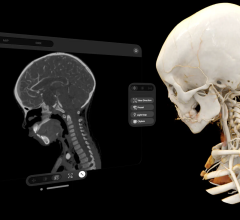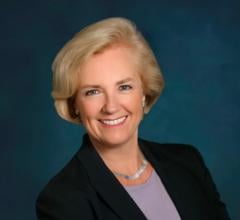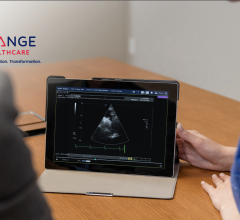The Centers for Medicare and Medicaid Services (CMS) gathered public comments on its Stage 3 Meaningful Use (MU) requirements through May 30. The third and final set of MU rules are a core part of the plan to reform American healthcare by leveraging health information technology (IT) to help reduce costs, eliminate redundancies, and convert from a fee-for-service to a fee-for-performance reimbursement system.
CMS has listed eight proposed core objectives, including:
2. Electronic Prescribing
5. Patient Electronic Access to Health Information
7. Health Information Exchange (HIE)
8. Public Health Reporting
All providers will have to show compliance with Stage 3 MU requirements as of 2018, or face reductions in their CMS payments.
The key to this these objectives, combined with earlier Stage 1 and 2 IT requirements, is the ability to freely share information between all physicians who care for a patient so they are on the same page and can see what is going on in the continuum of care. This includes everyone in the chain, from the primary care physician, specialist physicians, radiology, pathology and pharmacy. MU calls for providing patients with easy access to all these records and fostering shareable file formats so information and images can be exchanged across multiple healthcare organizations.
Central Themes
Each stage of MU has a central theme, with each building on IT established in earlier stages, said Robert Anthony, deputy director, HIT Initiatives Group Office of E-Health Standards and CMS, who framed the proposed rules in a packed session at the 2015 Healthcare Information and Management Systems Society (HIMSS) conference in April. Stage 1 centered around data capturing and sharing,
Stage 2 around advanced clinical processing and Stage 3 will center around improving patient outcomes. “Part of the goal for Stage 3 is to become sustainable into the future,” he said.
Stages 1 and 2 concentrated on creating high-level, institution-wide electronic medical record (EMR) and IT systems, with rules aimed at over arching IT concerns and not addressing how MU should be applied to specific specialties. He explained that Stage 3 is meant to be “meaningful use for everyone,” with all of its requirements employed by all providers, regardless of specialty. Anthony said Stage 3 is supposed to enable advanced use of healthcare IT to promote health information exchange to help enable improved care.
“We moved away from a core set of measures for some areas of healthcare to a set everyone should implement,” Anthony said.
Stage 3 also attempts to streamline the reporting requirements including rolling all reporting into a single system. “We heard loud and clear that the framework of Stage 1 and 2 was complex and difficult to follow, and it was burdensome for some providers,” Anthony said. For that reason, he explained Stage 3 allows attesting to any EMR reporting requirement during any continuous 90-day period, rather than using several staggered deadline periods. It also includes simplifying objectives, allowing reporting on all Stage 3 objectives at once, instead of having several separate reporting periods for different aspects of Stage 1 and 2. Providers also can voluntarily begin early reporting of Stage 3 compliance starting in 2017. The requirement to report on Stage 3 compliance will begin in 2018, regardless of prior participation in Stage 1 or 2 MU.
Stage 3 retains the percentage thresholds so providers do not need to do all things required with all patients, realizing sometimes circumstances make 100 percent compliance difficult.
Stage 3 Objectives
Below is a brief summary of Stage 3’s objectives. Each objective has several individual measures that need to be met to qualify for MU, as explained at HIMSS 2015 by Elisabeth Myers, lead for policy and outreach for eHealth initiatives in the Division of Health Information Technology at CMS. Several of the objectives interrelate to one another, including three aimed at improving patient safety and reducing duplicate tests, and four aimed at enabling easier patient and provider access to all health records.
Objective 1: Protect Patient Electronic Health Information
Providers need to guarantee the protection of patient information, in compliance with Health Insurance Portability and Accountability Act (HIPAA) rules.
Objective 2: Electronic Prescribing
E-prescribing for medication will help eliminate the need for paper scripts, which are often difficult to read and sometimes include improper drug information. E-prescribing also enables automated checks for other drugs a patient is already being prescribed to identify duplicate or biosimilar drugs they have already been prescribed, or to identify potential drug interactions. The goal is to reduce costs and improve patient safety.
Objective 3: Clinical Decision Support (CDS)
CDS software can be added as a layer on top of specialty EMR reporting systems (such as RIS/PACS, OIMS or CVIS), or integrated with e-prescribing and computerized order entry software systems. The idea is to ensure tests or procedures ordered meet appropriate use criteria (AUC) set by the applicable specialty societies. An example of this might be which imaging or blood tests are considered most appropriate for a patient presenting with chest pain. Providers need to implement five CDS clinical quality measures or use for four high-priority health conditions. The goal of the rule is to reduce the number of tests used to arrive at a diagnosis to help reduce healthcare costs. In the future, CMS reimbursement might be tied to justification in a CDS system. The CDS software can provide the appropriate documentation to show why a specific test was ordered, or document the physician reasoning for over riding an AUC guideline.
Objective 4: Computerized Provider Order Entry (CPOE)
CPOE for all tests and procedures is supposed to allow providers access to view all the orders for a specific patient electronically. This will help eliminate duplicate orders, replace unclear written orders and help improve patient safety. CPOE systems can also work in tandem with CDS software to help determine the most appropriate tests or procedures for patients. Myers said Stage 3 requires 60 percent of diagnostic imaging orders to be entered using CPOE.
Objective 5: Patient Electronic Access to Health Information
Patient engagement is seen as a key element of healthcare reform, where the patient gets more involved in their own care and decision making, rather than the current system where a physician makes decisions for the patient and the patient does not have easy access to records, orders, test results or imaging. Myers said patients need easy access to this information to enable them to be involved in their care and to understand their disease state. Adding this access enables provider engagement to help patients make educated decisions.
If all goes according to plan, patients will be able to access their records via a personal health record (PHR). This might be in the form of a Web-based patient portal to access their EMR information, or via overlay PHR software that works as an application program interface (API) to access EMR data. Myers said an API might allow combining multiple doctors or departments, or records from multiple family members, into one access point.
The objective calls for 80 percent of patients to have access to new data (test results, imaging or procedure reports, etc.) after a provider visit or discharge within 24 hours of its availability to the provider.
An additional measure of this objective requires providing patients with educational information pertaining to their health electronically.
Objective 6: Coordination of Care Through Patient Engagement
There are three key measures to this objective. More than 25 percent of patients need to be able to view, download or transmit their health records to a third-party. Providers need to communicate with 35 percent of their patients electronically through a secure messaging system, enabling two-way communications. Lastly, a provider needs to use health information received electronically from a nonphysician source for 15 percent of patients encountered. They also must use information sent from at least 5 percent of their patients, including information from wearable electronic devices or data from smartphone health tracking apps.
Objective 7: Health Information Exchange (HIE)
Transitions in care today are sometimes bumpy, with poor interfaces of data between care providers. This rule requires the electronic transfer of patient records for 50 percent of transitions of care or referrals. The rule also requires providers to query a patient’s electronic record. However, Myers said providers will not be penalized if they conduct searches or have a transition of care and no electronic records exist.
Objective 8: Public Health Reporting
There are numerous measures under this objective, including the electronic reporting of labs, clinical data registry reporting, public health registry reporting, case reporting and reporting of syndromes.
To read the full 196-page document of proposed Stage 3 rules, visit: https://federalregister.gov/a/2015-06685



 March 21, 2024
March 21, 2024 








